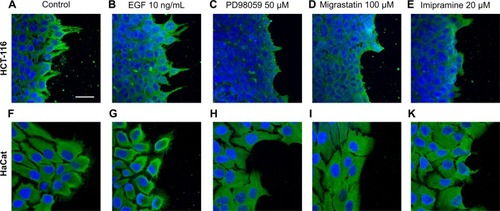- Title
-
New role of the antidepressant imipramine as a Fascin1 inhibitor in colorectal cancer cells
- Authors
- Alburquerque-González, B., Bernabé-García, M., Montoro-García, S., Bernabé-García, Á., Rodrigues, P.C., Ruiz Sanz, J., López-Calderón, F.F., Luque, I., Nicolas, F.J., Cayuela, M.L., Salo, T., Pérez-Sánchez, H., Conesa-Zamora, P.
- Source
- Full text @ Exp. Mol. Med.
|
|
|
|
|
|
|
|
|
Inset shows the immunofluorescence analysis of the fascin1 marker (green) under control conditions: |
|
|
|
|
|
|








